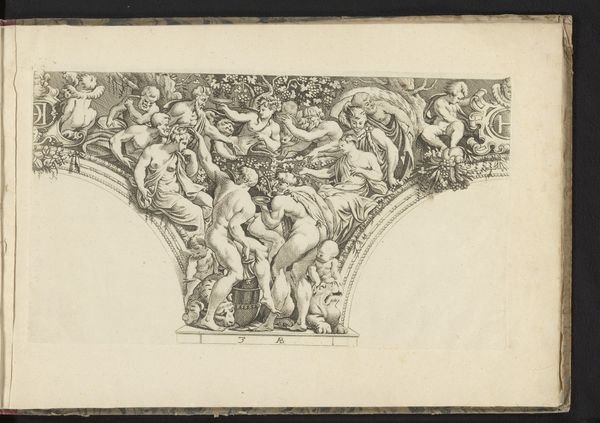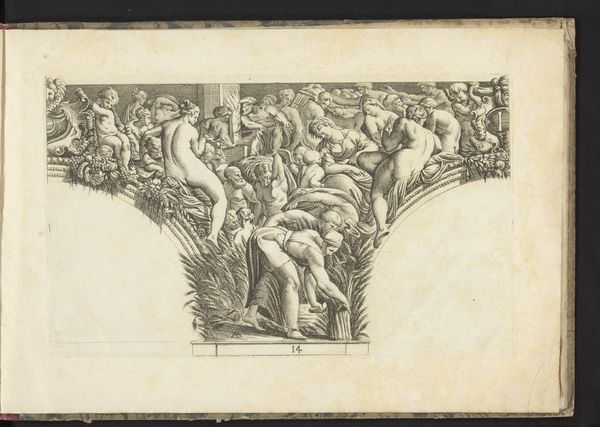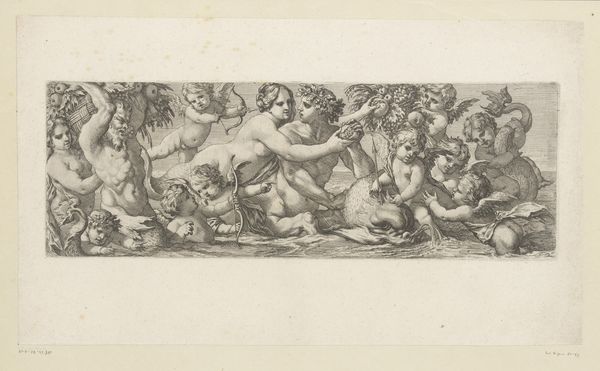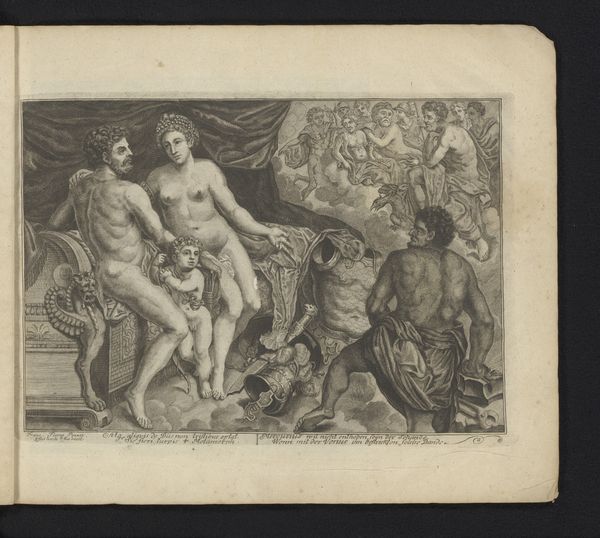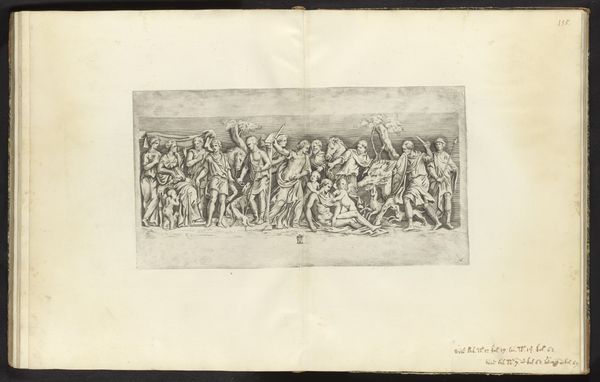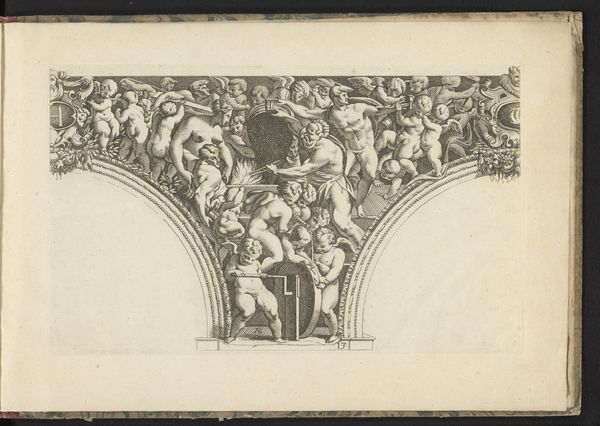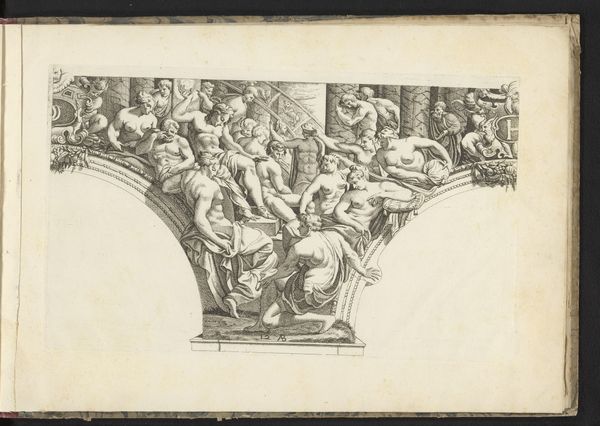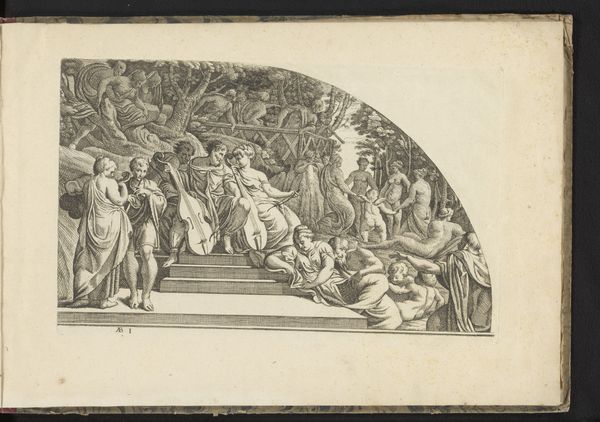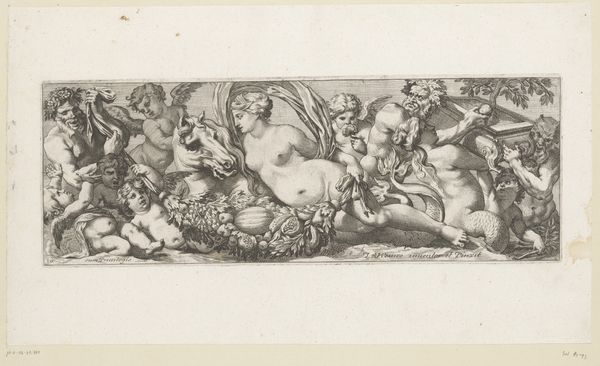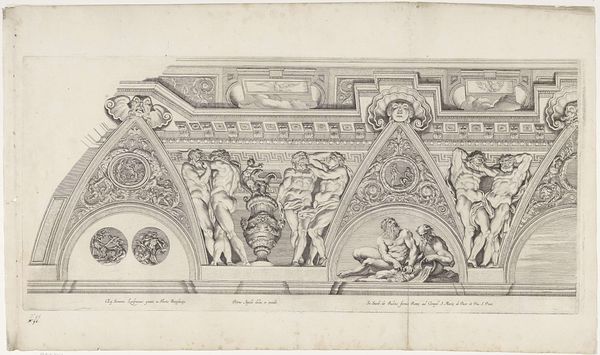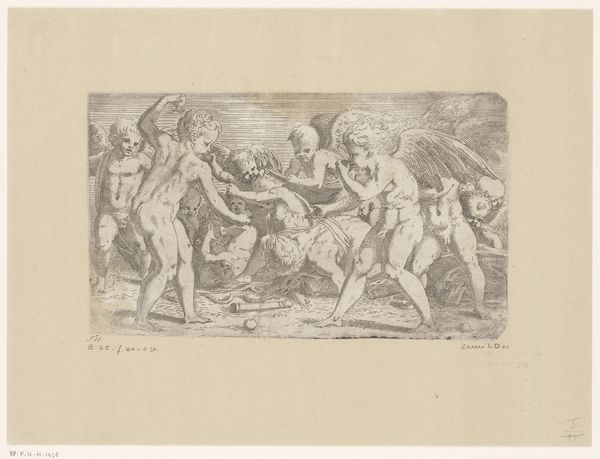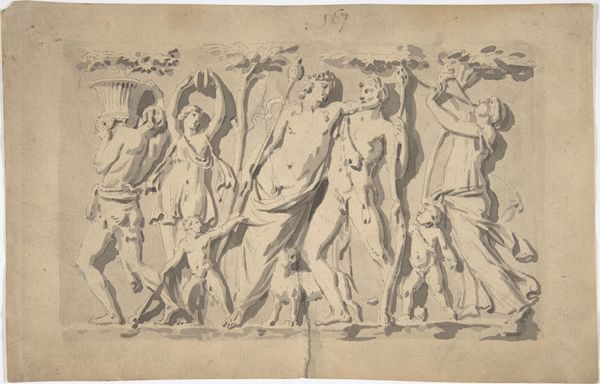
drawing, print, ink, pen, engraving
#
drawing
#
ink drawing
#
allegory
#
baroque
#
pen drawing
# print
#
pen sketch
#
figuration
#
ink
#
pen
#
history-painting
#
academic-art
#
nude
#
engraving
Dimensions: height 213 mm, width 362 mm
Copyright: Rijks Museum: Open Domain
Editor: So, this is "Dansende gratiën voor de goden van de Olympus," created sometime between 1622 and 1693, using pen, ink, and engraving. It's quite a lively composition, but there is something almost voyeuristic about the arrangement. What do you see in this piece? Curator: Beyond the initial classical subject matter, the allegory, I think it's important to consider the historical context of its creation. Images like these, often reproduced as prints, served a powerful function in disseminating ideals of beauty and power within the ruling classes. These aren't just graceful figures; they are projecting power, status and an appeal to classical ideas that were closely aligned with particular aristocratic projects. To what extent do you think its original function still carries weight today? Editor: That’s a compelling perspective. It shifts my focus from just admiring the artistry to considering how these images actively shaped social hierarchies. Do you think the prominence of nude figures played into this at all? Curator: Absolutely. The nude in Western art has a complex and often troubling history. Here, the idealized nudes of the Graces can be viewed as both objects of desire and embodiments of classical virtue, furthering this dynamic of power. This representation contributes to the normalization of the white, European body as the standard, and we should really examine what those omissions might signify. What does the idea of seeing this artwork presented today evoke for you? Editor: It makes me think about the responsibility of museums to contextualize these kinds of artworks. It’s not enough to simply display them; we need to acknowledge their role in perpetuating potentially harmful ideologies. Curator: Exactly. And in interrogating the dynamics of power at play within these kinds of artworks, we empower ourselves to question similar dynamics in our present society. Editor: Thanks so much. I feel as though my reading of this artwork has gained so much complexity. Curator: It’s been an enlightening conversation for me, too.
Comments
No comments
Be the first to comment and join the conversation on the ultimate creative platform.
